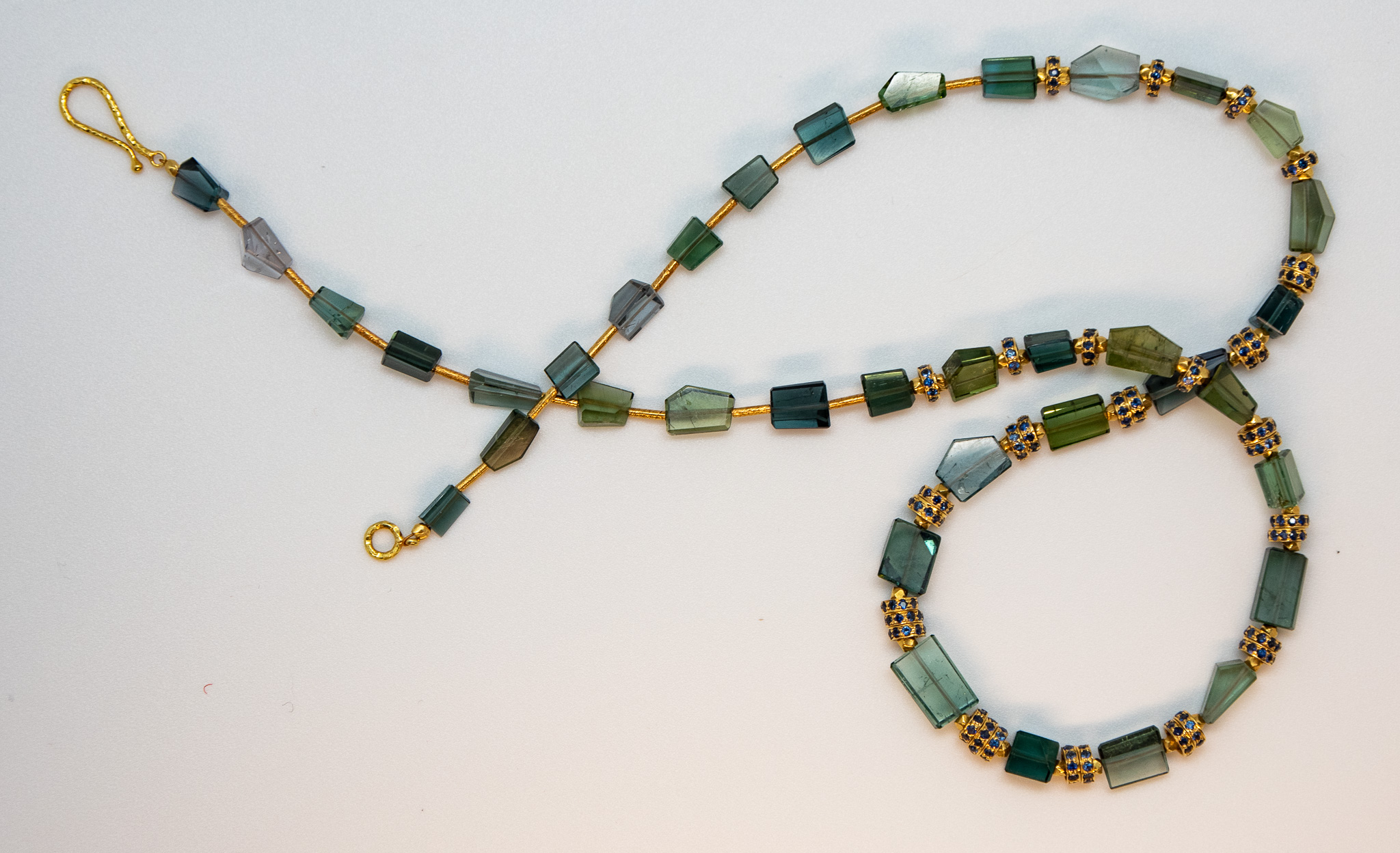Green Tourmaline and 18K Sapphire Rondelle Choker
The faeries will be green with envy when they see you in these polished natural blue and green tourmaline crystals from Brazil, accented with 18K blue sapphire rondelles. The smooth angularity of the tourmalines balances nicely with the sapphire rondelles (ok, so I went a little overboard on the sapphires). Individually hand knotted, the necklace is finished with a simple 18K gold hammered hook-and-eye clasp. Simply yummy.
designer: atelier bento
details:
- necklace length: 18"
- total carat weight: 282 carats
- gem source: Brazil
- stone treatments: none
- gold content: 18K
- gold & sapphire bead source: India
- marks: bento
$7900
item: N 00023
availability: one-of-a-kind
CONTACT: 520-906-7187
about Tourmalines:
Tourmalines exhibit the most diverse color range of any gemstone. From the red of Rubellite, the indigo blue of Indicolite, the turquoise of the Paraíba tourmaline from Brazil, and the ever fascinating Watermelon Tourmaline that is cut crosswise to reveal a pink center with a green edge, there is a tourmaline for every imagination.
Tourmalines make up a group of closely related mineral species that share the same crystal structure but have different chemical and physical properties. They share the elements silicon, aluminum, and boron, but contain a complex mixture of other elements such as sodium, lithium, calcium, magnesium, manganese, iron, chromium, vanadium, fluorine, and sometimes copper. A tourmaline’s chemical composition directly influences its physical properties and is responsible for its color. Gemologists use a tourmaline’s properties and chemical composition to define its species. The major tourmaline species are elbaite, liddicoatite, dravite, uvite, and schorl. Most gem tourmalines form in igneous granite pegmatite pockets and some form in limestone that has been altered by heat and pressure.
Tourmalines are mined in a variety of places, most notably Brazil, however there are also some great sources in California and Maine, as well as in Madagascar and Afghanistan. The birthstone of October, an October girl could probably collect a different color of tourmaline for each birthday!
partial source: GIA.edu
YOU MAY ALSO LOVE:

Dewdrops of Aqua
CONTACT: 520-906-7187







